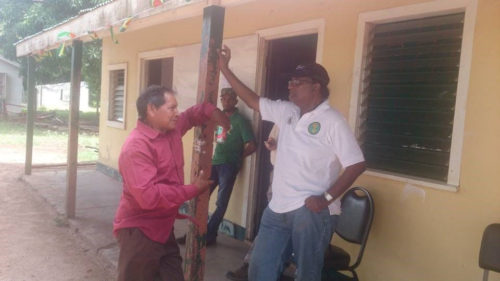In the months ahead, the Amerindian community of Quarrie, situated in the Rupununi Savannah, will be embarking on a journey of economic transformation. The community will be aiming to harvest and process approximately 21 acres of cassava currently under cultivation after which the harvest will be processed at two agro-processing plants that are being set up at Wowetta and Moco Moco, also situated in Region Nine.
The National Agricultural Research and Extension Institute (NAREI) is assisting in ensuring that the project is a success by helping to source a mechanical planter and harvester as well as by providing technical support and other relevant resources to the Village Council, headed by Toshao Maurice Barreto.

NAREI Chief Executive Officer Dr Oudho Homenauth and a team visited Quarrie recently to examine the progress being made by the hinterland agriculture initiative. Having reviewed the quality of the agricultural practices being pursued by the project, the NAREI head believes it is likely to be a success.
Cassava production is not new to residents of Quarrie and other hinterland communities where ground provision is commonly cultivated. Over the years cassava has been cultivated at subsistence level in the Quarrie community. The current initiative, however, derives from an approach made to the Ministry of Agriculture by the community with a request for support with a project that sought to cultivate bitter cassava in commercial quantities. The community is now cultivating various varieties of bitter cassava commonly used to make cassava bread and farine among other products.
The Quarrie farming group comprises 14 hinterland households and each household has been assigned responsibility for the cultivation and care of a three-acre plot of land. The plots were created using the ridge and furrow technique to prevent flooding. Further, the sandy soil present in the savannah is suitable for the use of the mechanical planter and harvester equipment that will be needed for this magnitude of cultivation, Dr Homenauth said.
Toshao Barreto, who is playing a major role in the project, said that it will provide employment for Quarrie residents and contribute to changing the economic lives of families. While each household has been assigned particular responsibility for their own plot, the marketing of the produce will be a collective endeavour. Each acre of land is expected to produce around 4,000 cassava plants and each plant is expected to produce a minimum of three pounds of cassava.
Cassava is marketed at between $15 and $20 per pound.




